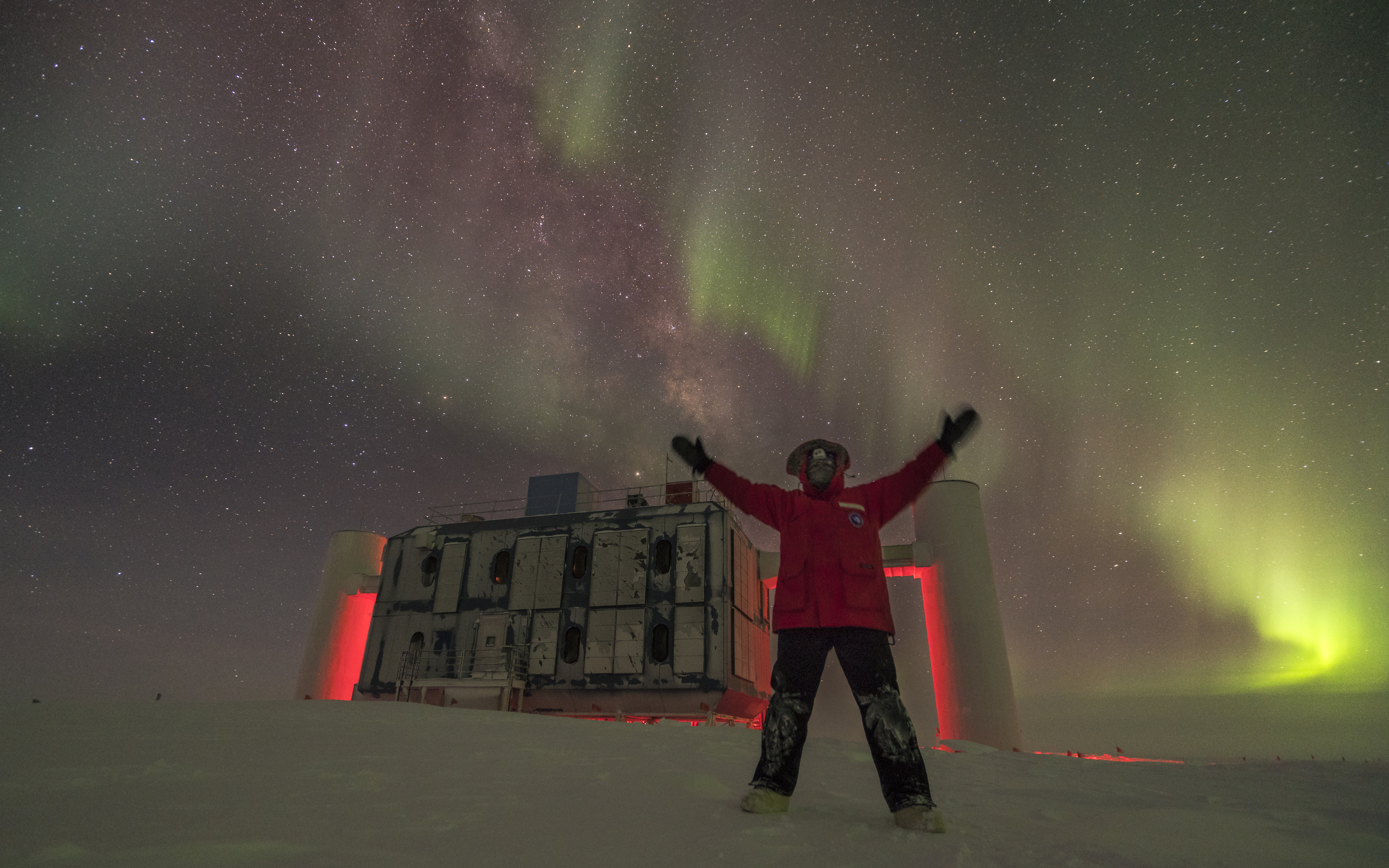
Listeners to The Current and my daily 4:20 p.m. chat with my hero, Mary Lucia, won’t be hearing about what I’m about to tell you. Mary doesn’t like my stories of space and the cosmos and will continue to give me grief about them, I presume, until we find a planet inhabited by nothing by pugs.
But until we find out more about the universe, we probably won’t discover that enchanted domain, which is why the announcement today is important: We have a new way of looking at the universe.
An ultrahigh-energy cosmic neutrino has been captured deep under Antarctica. It’s been traveling for four billion years, probably from a supermassive black hole at the center of a distant galaxy.
“It’s an achievement that opens a whole new way of looking at the universe,” NPR’s Joe Palca says.
“Astronomy started when people looked at the night sky, and that’s light hitting your eyes,” says Naoko Kurahashi Neilson, an astrophysicist at Drexel University in Philadelphia and another member of the IceCube collaboration.
“It’s expanded from just visible light to X-rays and gamma rays, and also to infrared and radio waves,” she says.
But light waves and gamma rays and even radio waves are all what scientists call electromagnetic radiation. They differ in wave length, but they’re all from the same family.
“And then here come neutrinos,” Neilson says, “which is a completely different way to look at the universe. And gee, I wonder what we can see if we use this whole different way to look at the universe.”
Pugs, I’m guessing. Don’t tell Mary.
The expedition, called IceCube, that captured the neutrino is led by a professor from the University of Wisconsin in Madison.
“This is the beginning of something,” Francis Halzen said. “There’s a whole part of astronomy that was a black box for us. I think we opened that up.”
Halzen was in Madison when the instruments in the Antarctic “pinged”, indicating something had been detected. But he didn’t think much of it, according to Madison.com. The thing pings at least once a month.
The energy level of this neutrino, however, stood out as the highest recording for a particle at IceCube– about 46 times greater than the energy of protons in the world’s most powerful particle accelerator, which is located in Europe.
And two other telescopes, one stationed on the Canary Islands and a NASA satellite in space, also detected the same blazar in the following weeks, further confirming the galaxy’s black hole powers neutrinos through galaxies, stars and anything else in its path.
“It was only when we started reading the other telegrams that this became an exciting event,” Halzen said.
Corroborating IceCube’s observations with other telescopes marks a milestone in what scientists call multi-messenger astronomy.
So what?
That’s the question I get from Mary a lot and it’s the one that the science community has a lot of difficulty explaining to mere mortals (who weren’t around, by the way, when this thing started its travels to earth).
Researchers have crossed the threshold into precise neutrino astronomy, according to Darren Grantat the University of Alberta, who tells Live Science “there’s a lot more to learn.”
“We’ll never understand the origins of the universe without understanding neutrinos,” Prof. Halzen said.
Today’s announcement provides a road map for doing that.
